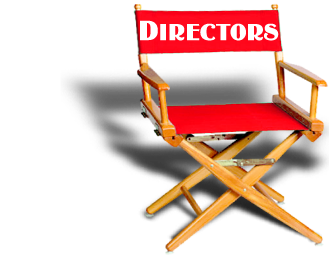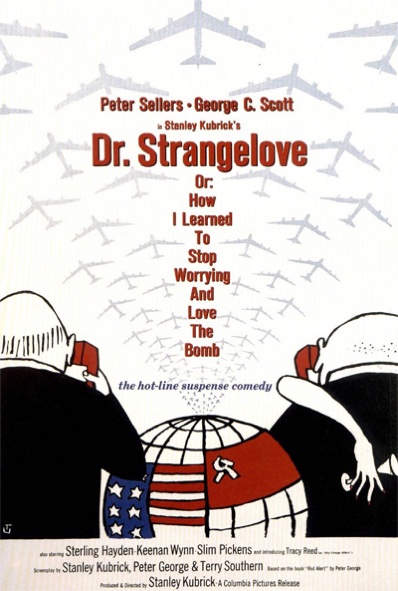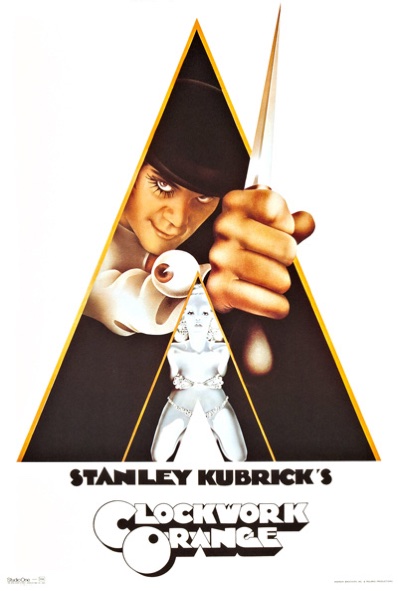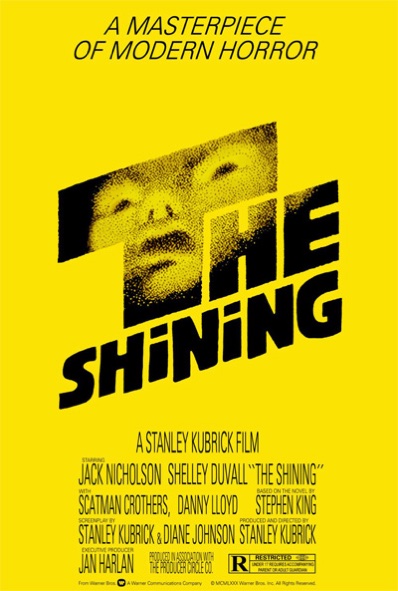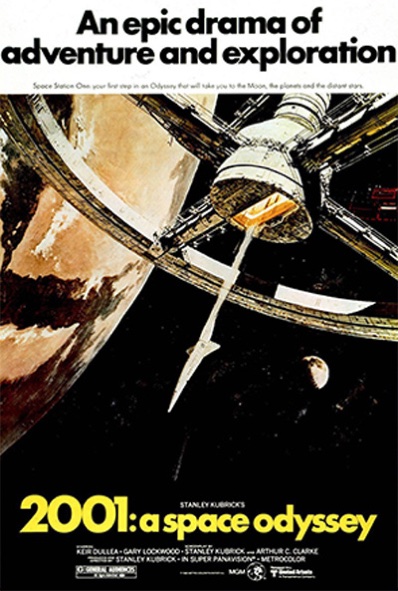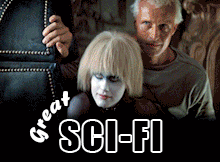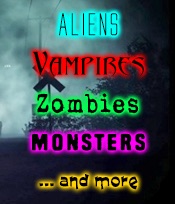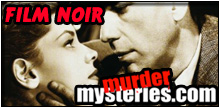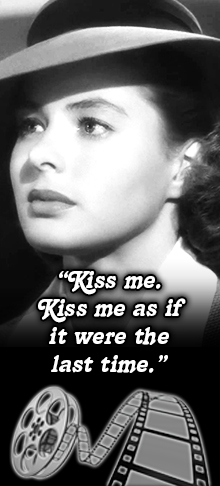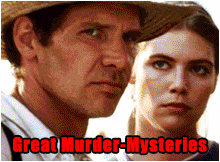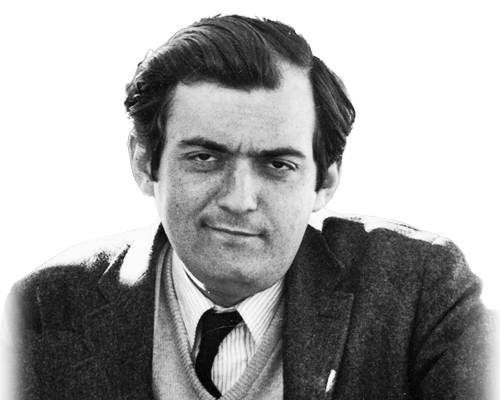
Stanley Kubrick
Best known for his extreme attention to detail and his perfectionism, Stanley Kubrick is considered to be one of the greatest and most influential directors in cinematic history. His films, which were usually adapted from novels or short stories, inhabit a wide range of genres, and are notable for their realism, dark humor, unique cinematography, striking set designs, and highly evocative music.
An obsessive-compulsive auteur, Kubrick was purposely enigmatic with his work, yet disdained the many rumors about his eccentricity. Second only to Howard Hughes, perhaps, in the amount of footage he shot for each film, he tended to blame actors’ lack of preparation for his sometimes spending days on one scene. He did admit to being paranoid about flying, though he had a pilot’s license and claimed he knew a bit too much about airplanes. Stanley wasn’t a recluse, though. He had a wife and enjoyed his family life in a normal, accessible house.
He was an artist whom studios liked, though it was hardly mutual. His pictures were usually controversial, always popular, not always critically acclaimed (though critics have sometimes reversed themselves on them), and always made money.
Stanley’s major pictures are all about sex and/or violence, raised to the level of art, of profound statements on the nature of mankind. Even “2001: A Space Odyssey” makes, in one scene, one of films most enduring statements on mans inherent violence — after a tribe of cavemen” touch the monolith, the symbol of their evolution is their ability to use weapons.
Though he lived in England most of his adult life, having moved there after shooting Spartacus, Stanley Kubrick was born in New York City. His father was disappointed that his exceptionally intelligent son was lousy in school, and tried to interest him in things like chess — Stanley was so good he earned a living playing for money in Washington Square — and photography.
Kubrick quit school to apprentice at Look magazine and was getting regular assignments by the time he was 17. He used his money from the magazine to finance his first film, a documentary version of his Look photo essay on a local boxer. From that, he got assignments for other documentaries and cheap films.
In 1957, he made “Paths of Glory” with Kirk Douglas. His first major production and his first anti-war film, it also showed his incredible extended tracking shots. When Kirk Douglas became unhappy with the first director of “Spartacus”, he asked Kubrick to take over. Douglas expected Kubrick to be a little cowed by the size of the production as well as the numerous stars. Not so. Kubrick immediately and decisively took the reins. He even took over the (uncredited) cinematography for Russ Metty, who complained all the way up to the point where it won him an Oscar.
Stanley Kubrick was very disappointed that Universal Studios didn’t let him cut the picture. He vowed to keep complete control from then on. And he kept his vow. Emigrating to England, he made “Lolita” in 1962, though his notorious control was diminished somewhat in his having to appease the pre-sexual-revolution censors. After that, Stanley Kubrick did his part to shape the culture of the ’60s and early ’70s with “Dr. Strangelove” (1964), “2001: A Space Odyssey” (1968), and “A Clockwork Orange” (1971).
Though he always wanted to do an epic of the life of Napoleon, he never did. His one period epic, “Barry Lyndon“, was hailed for its craftsmanship in lighting and production design, but neither the story nor the talents of Ryan O’Neal (basically forced on Kubrick by the studios in order to get their money) could lift the film to the caliber of his previous work. The picture was, however, profitable.
Though Stephen King hated Kubrick’s version of “The Shining” (1980), it is generally regarded as one of the best realizations of King’s works by both the public and critics. Stanley Kubrick’s last two films, twelve years apart, were rather like bookends to his first two major films. Like “Paths of Glory”, “Full Metal Jacket” (1987) is both an indictment of war and those at the top who conduct it, and another thoughtful examination of our innate violence. Like “Lolita”, Kubrick’s “Eyes Wide Shut” (1999) was an obsessive look at obsession itself. Filming lasted for 400 days, a cinematic record. Somehow fulfilling a cosmic metaphor, Stanley expired four days after delivering the film to Warner Bros.
Actually, though, it wasn’t his last film. Kubrick started working on “AI: Artificial Intelligence” in 1990, but tabled the film until technology could catch up with his vision. He planned to start working on it again after the completion of “Eyes Wide Shut”. Instead, his longtime friend and colleague Steven Spielberg, who had worked with Kubrick on the film earlier in the decade, took over the film, dedicating it to Kubrick.
— Nate Lee
Great Scenes
2001: A Space Odyssey
- The space special effects were light years ahead of their time
- A classic scene is the early man” throwing a bone in the air and it evolves into a space ship
- Audiences have for years been tripping on Keir Dullea’s final journey into infinity, becoming a starchild
- Keir Dullea’s unplugging of the spaceship computer, HAL, while it sings him a song
A Clockwork Orange
- Malcolm McDowell’s de-programing scene, where his eyelids are clamped open, and he is forced to watch violence accompanied by Beethoven
- The demonstration, in which Malcolm’s Alex is physically ill whenever he contemplates sex or violence, almost makes you miss the old Alex
Dr. Strangelove
- In Peter Sellers‘ brilliant crafting of Dr. Strangelove’s character, his two parts are at war with each other, as his Nazi mechanical arm tries to strangle him
- The nuclear explosions at the end are still (perhaps more than ever) unnerving
Full Metal Jacket
- Vincent D’Onofrio is particularly compelling throughout in his first major role, as an unbalanced Marine recruit, taking out his sergeant and himself
- R. Lee Ermey wrote much of his sergeant’s role from his own experience. The tracking shot of him marching around the barracks are pure Kubrick
- Also Kubrick is the multi-minute POV take following Matthew Modine and his squad on patrol
The Shining
- Kubrick’s symmetrical style is in bizarre contrast to the subject matter, but it works (for most people)
- Jack Nicholson’s “Here’s Johnny!” scene and the chase through the maze mark an expert craftsman
Paths of Glory
- Kubrick seemed to have perfected the long, long track shot already, as he “follows” Kirk Douglas through the World War One French trench
